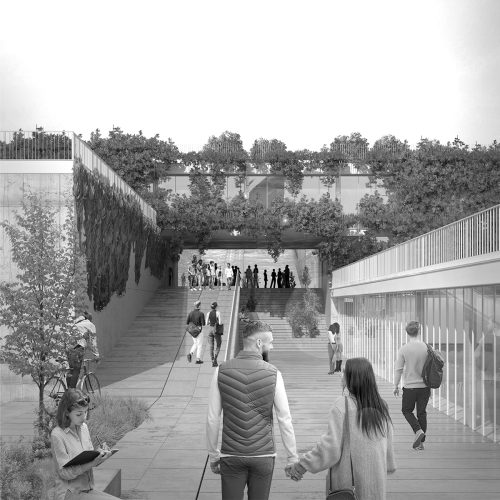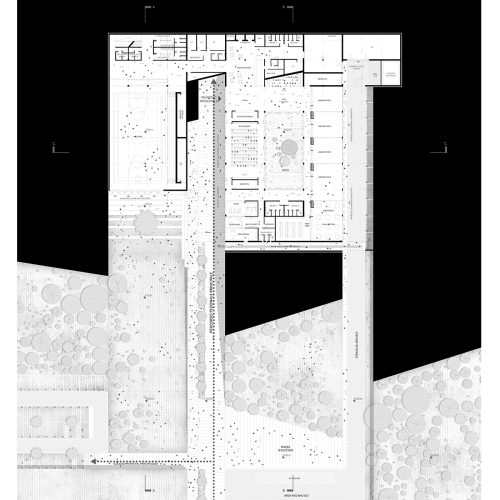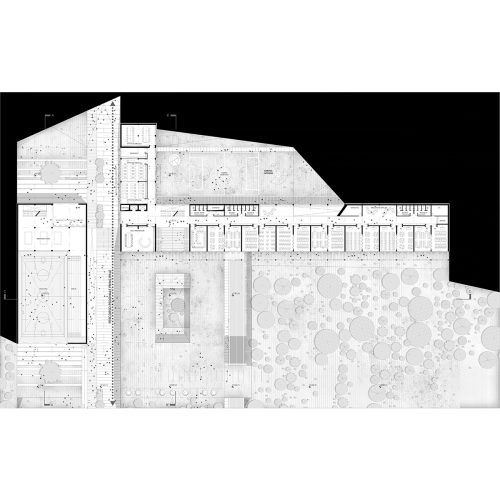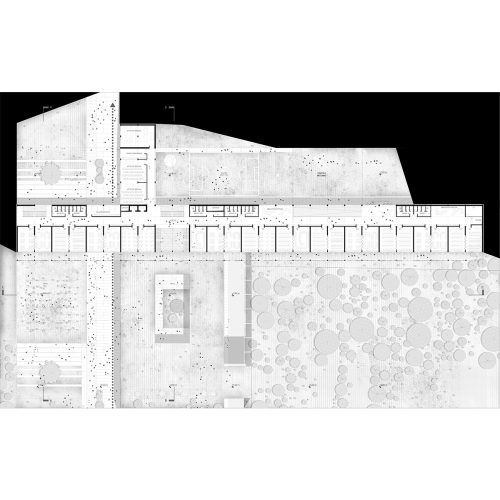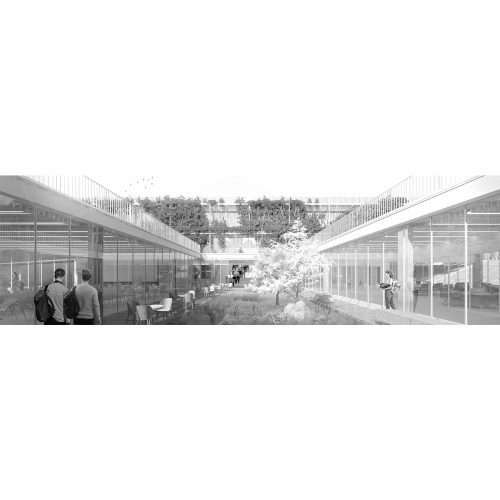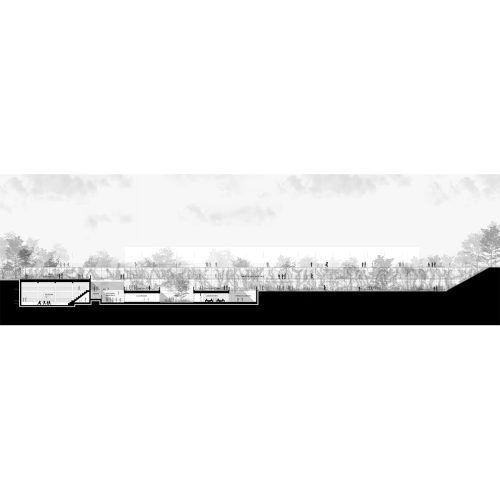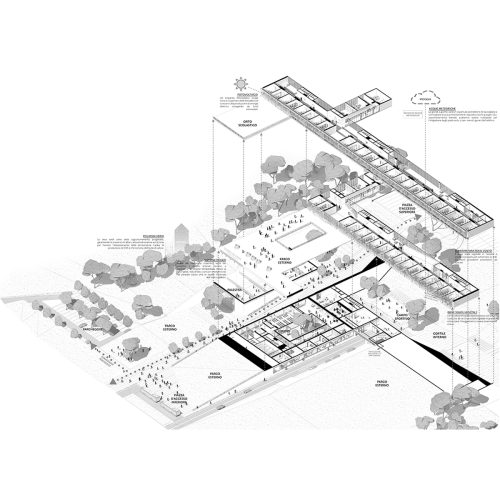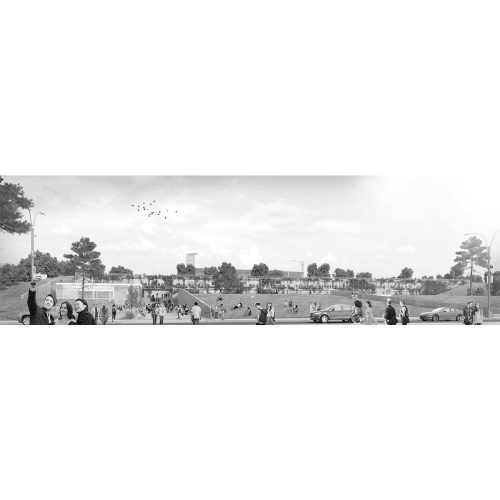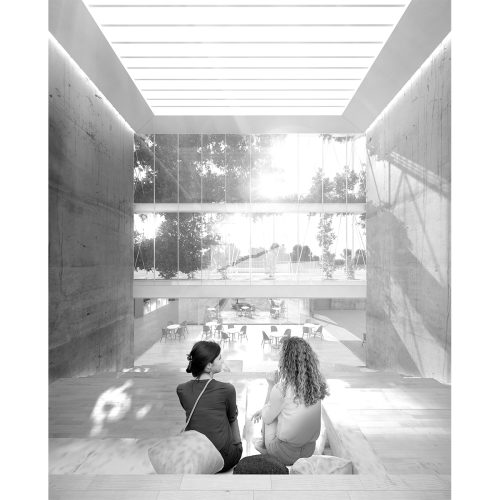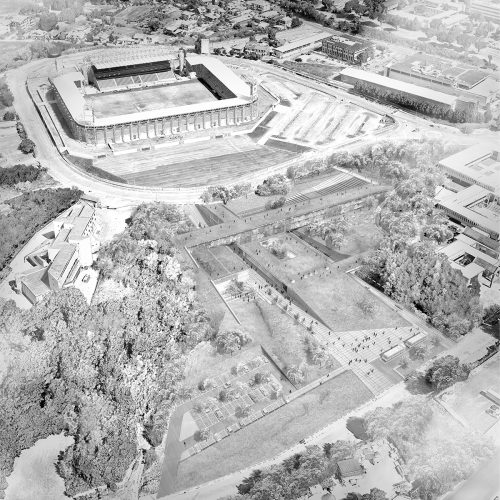High school in Frosinone
- AWARD: 3rd Prize
- YEAR: 2021
- STATUS: Unbuilt
- LOCATION: Frosinone (FR), Italy
- TYPE: High School
- SURFACE: 3.000 sqm
- BUDGET: 4.000.000 €
- CLIENT: Frosinone Municipality
- CREDITS: TARI Architects and Alfonso Giancotti in collaboration with Manlio Amadio, Vladimiro Alfonsi, C. Celleno, Alessandro Mirabella, Daniele Montoni, Emanuel Serri, Valeria Ricci and Valerio Villanucci
| Integrated System within the landscape |
The reference context of the project area, made up of elements differing in function, morphological characteristics and formal qualities suggested the idea of not identifying the new school building as yet another landscape ‘emergency’ but as a project in the landscape, integrally engraved on the existing green slope that hosts it. A building with an independent function, but also a connection between the existing elements of the system with the underlying Via Michelangelo, while also, and above all, a place for being in nature.
There are three steps that guide the morphological and spatial approach of the intervention, provoked by the preliminary formulation of a significant question: How one could address, using a school project as a starting point, the contradiction triggered by the simultaneous rising of the peripheral in the contemporary city and the urbanization of the rurality?
The first step is considering the existing green plot as the protagonist of a project aiming to not alter the existing perception of a landscape that fits into a context of real urban countryside. A desire to overturn a principle of indeterminate expansion of the city that leads to the performance of residual practices, identifying this place as a site where clues of new ecologies between territory and society can emerge.The second step is that of incision of the existing green plan. In order to overcome the contradictions mentioned above, the cuts in the soil want to support the proposal of an unprecedented sustainability, of new possible forms of urban spatiality by handing over to an organism for education and training the task of declaring what role the urban landscape can take on today, in the cities.
In short, the third and final step is to overcome this uncertainty, this growing indifference on the part of peri urban society to the city as well as to the countryside. A place in the city for the city.
